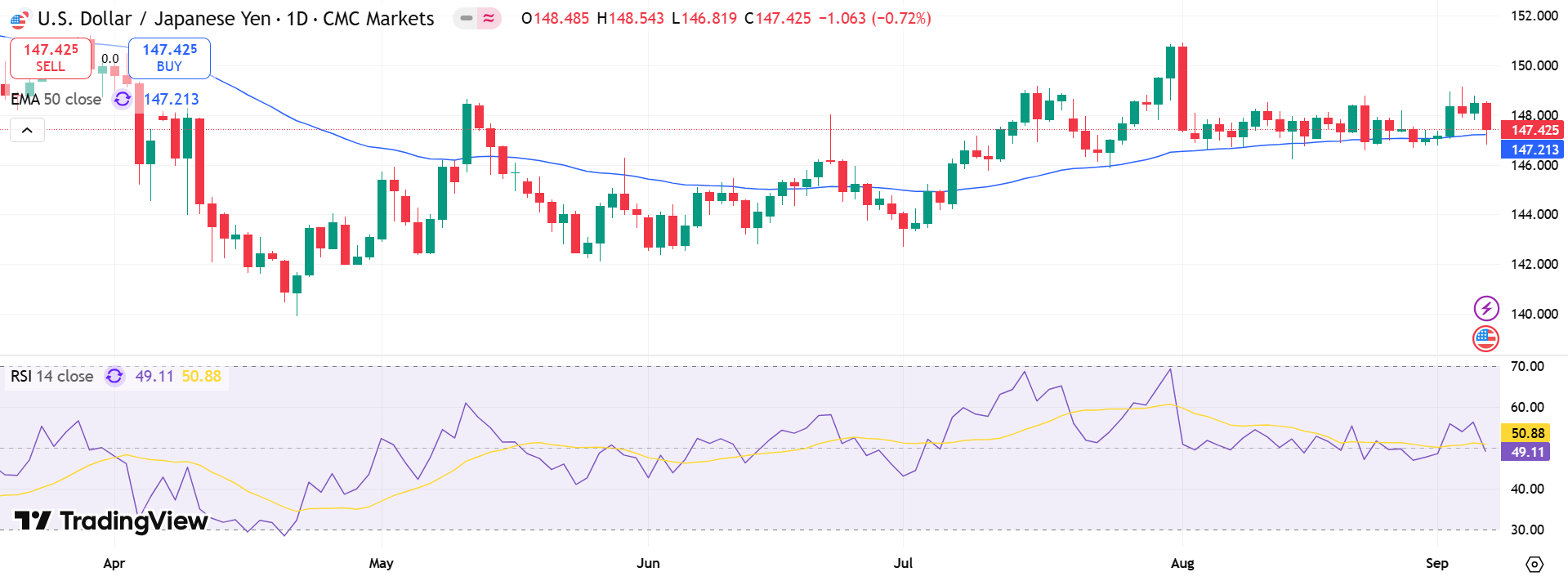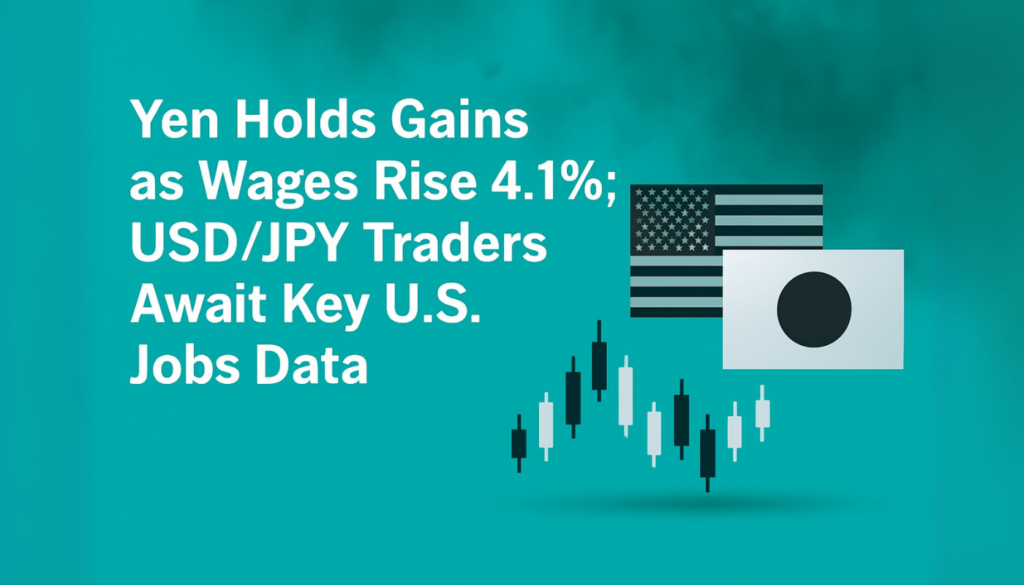The Japanese Yen held modest gains against the U.S. Dollar on Friday, with traders staying cautious ahead of the critical U.S. Nonfarm Payrolls (NFP) release. The report is expected to shape the Federal Reserve’s rate-cut outlook and set near-term direction for the USD/JPY, which has traded around the 148.00–148.80 range this week.
Despite a weaker dollar backdrop, Yen bulls lacked conviction as broader risk appetite and political uncertainty weighed on demand for the safe-haven currency. However, growing expectations that the Bank of Japan (BoJ) will continue its policy normalization path lent underlying support.
Wage Growth and Inflation Support BoJ Path
Fresh labor data bolstered the Yen’s case for strength. Japan’s nominal wages rose 4.1% year-on-year in July, the fastest pace in seven months and above the 3% forecast. Inflation-adjusted real wages turned positive, climbing 0.5%, ending a seven-month streak of declines.
Other key developments included:
- Consumer inflation rose 3.6% year-on-year, the slowest since last November but still above the BoJ’s 2% target.
- Household spending increased 1.4% annually, missing expectations of 2.3%, but rose 1.7% month-on-month.
- Wage growth and positive real incomes reinforced market bets on a BoJ rate hike before year-end.
These figures point to resilient domestic demand, adding pressure on policymakers to tighten policy further despite slowing inflation momentum.
USD/JPY Technical Outlook and U.S. Fed Impact
From a technical perspective, repeated failures near the 200-day Simple Moving Average (148.75–148.80) suggest resistance remains firm. A sustained move below 148.00 could accelerate losses toward 147.40, and then 147.00–146.70. A break of 146.20 would expose the August lows near 146.00.

On the upside, clearing 149.20—the 61.8% Fibonacci retracement from the August swing high—would tilt bias back in favor of dollar bulls, with potential to retest 150.00 and even 151.00.
Meanwhile, the dollar remains under pressure as markets fully price in at least one 25-basis-point Fed cut in September, with odds rising for a second move by year-end. This has kept dollar demand subdued, even as risk sentiment improved following a U.S. move to lower tariffs on Japanese auto imports from 27.5% to 15%.
The NFP report later today will be pivotal. A weaker-than-expected reading could cement expectations for deeper Fed cuts, pushing the dollar lower and giving Yen bulls momentum to test key downside levels.


